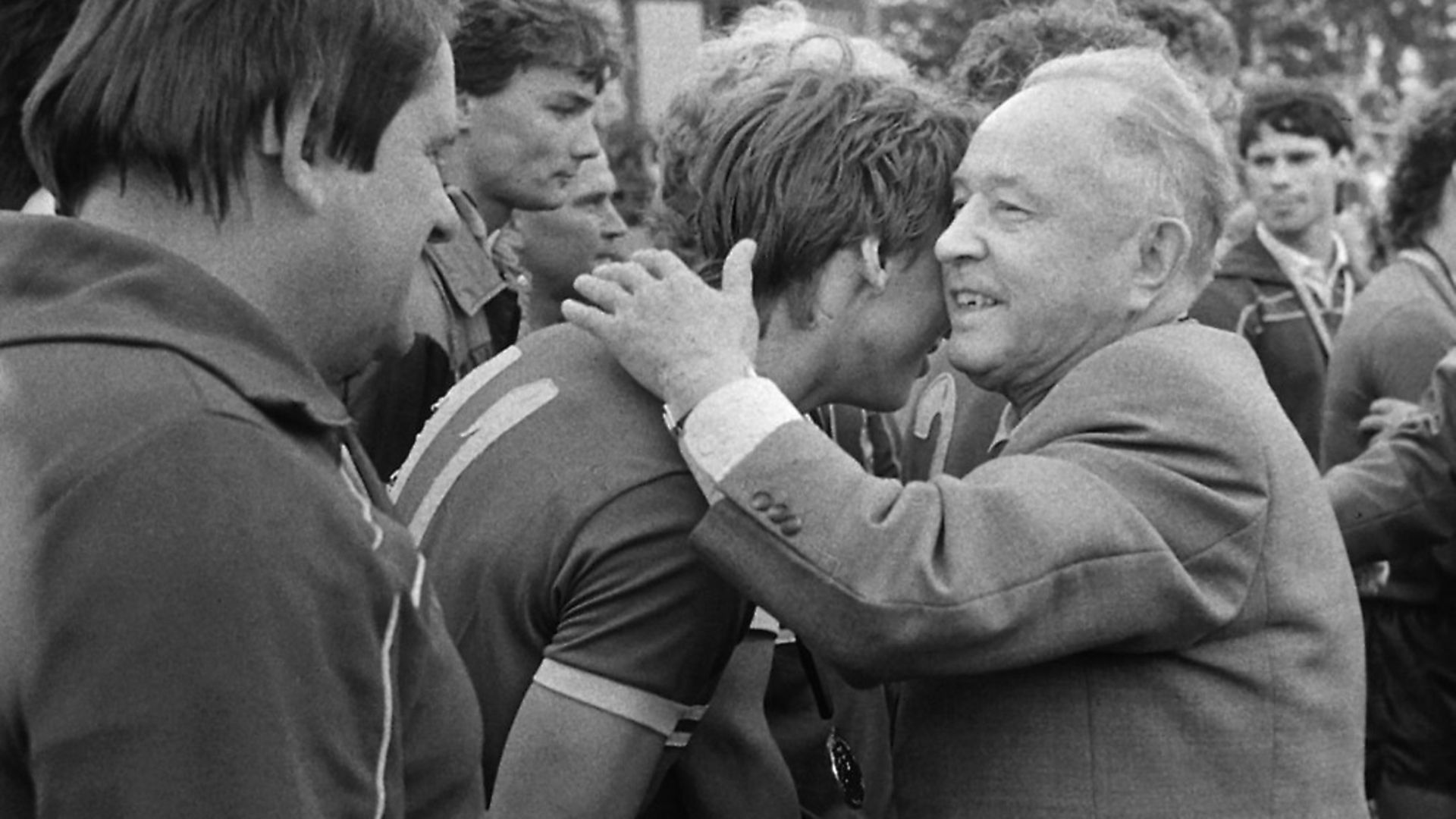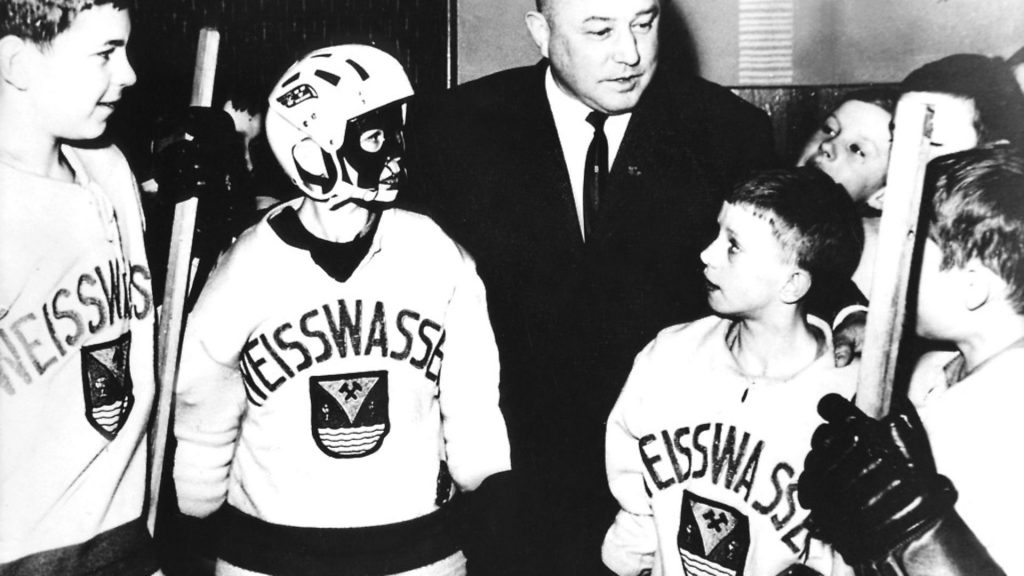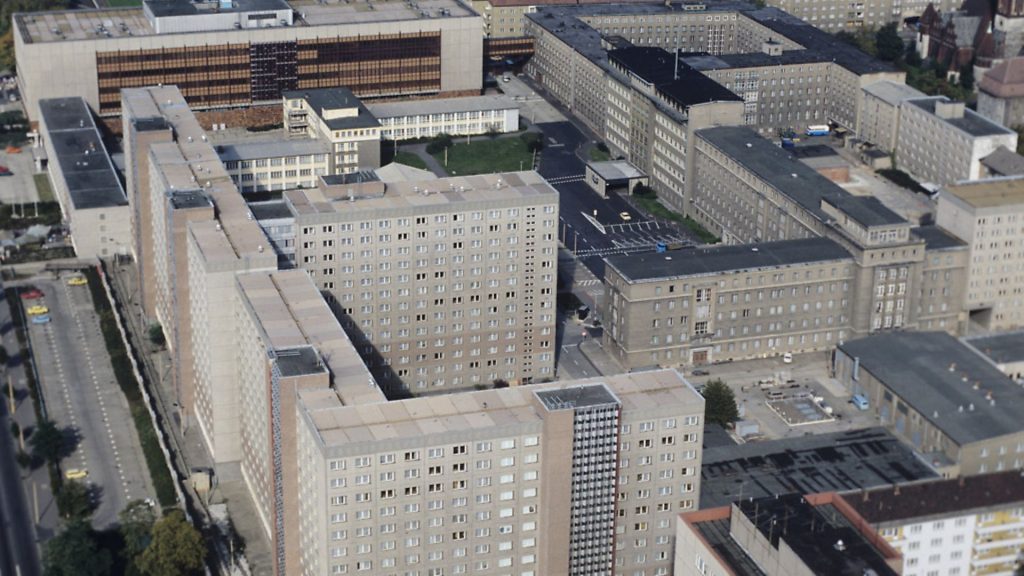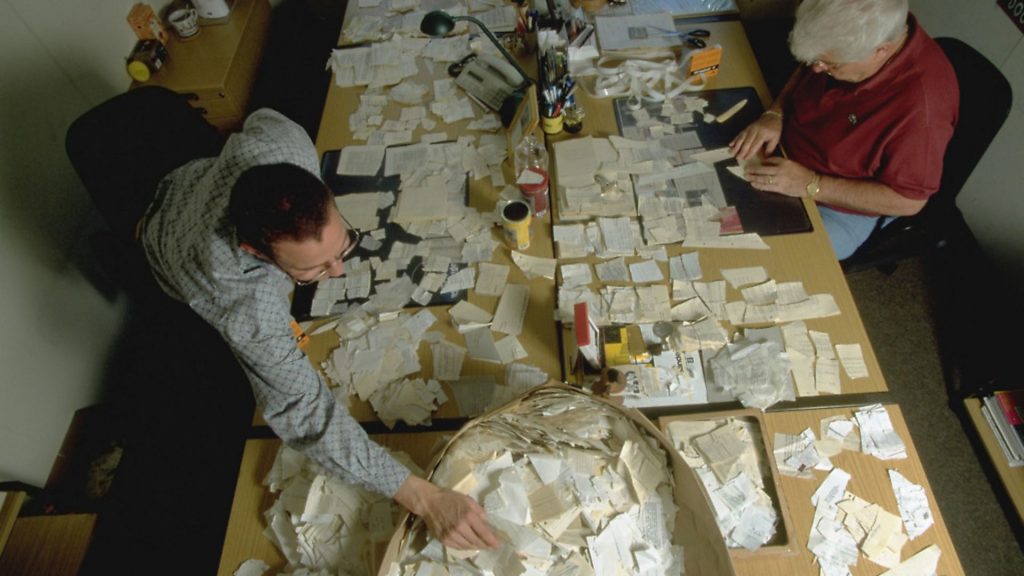
Erich Mielke’s name and face may not be as recognisable as history’s other villains but, 30 years after his downfall, there are signs that his monstrous methods still resonate. IAN WALKER reports.

Part of the phenomena of Ostalgie, the sentimental longing among east Germans for life in the old DDR, is nothing more sinister than a kitsch nostalgia for bad cars, miserable interior decor and terrible television. However, since the rise of populism – notable in the eastern half of Germany – this phenomenon has also played its part in the reactionary political attack on globalisation, liberalism, immigration and freedom.
For the most notable feature of the old East Germany was not its cars, decor or television shows – memorable though each was – but its secret police force, the Stasi, which, for four decades, managed to integrate itself into every aspect of its citizen’s lives, from the office, to bedroom, to the classroom.
This remarkable organisation was largely the creation of one man. Yet such was the nature of his work – bureaucratic, behind the scenes, beneath a titular leader – that he has largely escaped the opprobrium heaped on other monsters of the 20th century, such as Hitler, Stalin and Mao.
Erich Mielke, though, deserves to be spoken of in such company, as the architect of a dehumanising system which imprisoned an entire nation.

Mielke was a member of the Stasi – Staatssicherheitsdienst (state security service) – right from its moment of creation, in 1950. It was established to perform two roles: The surveillance of the west (particularly West Germany) and the surveillance and control of its own population.
Initially, the organisation was little more than a carbon copy of Soviet secret agencies. Stasi agents even called themselves Chekists, after the Russians who had served with the Cheka, the Bolsheviks’ brutal earliest secret police.
In these early years, the Stasi did not seem particularly up to the task assigned to it. As the East German regime consolidated its power, not entirely coincidentally, the country encountered severe shortages of goods and services. This stagnation coincided with the Wirtschaftswunder, the economic miracle which was transforming West Germany and turning it into both capitalism’s frontline and its shop window.
The East German people reacted in two ways: In 1953, they rebelled, with more than a million taking to the streets and the state relying on Soviet tanks and troops to survive; and, secondly, they fled, tens of thousands of them leaving East Germany and heading west. Before long, the workers’ paradise was running out of workers.

In response, changes were made within the Stasi, the most important of which was the appointment of Mielke, first as deputy and then, in 1957, as leader.
Once he was in charge, Mielke built an organisation that did something neither the Gestapo, the Cheka nor the KGB ever really achieved. Using close surveillance (for example, almost every letter sent in East Germany was opened), and informers (about 2% of the population worked with the Stasi in some form or other) the Stasi became entirely enmeshed with East German society.
He created a secret police force where the state and the people became one. This meant that the Stasi could police the thoughts, plans, ambitions and even desires of the people. With the Stasi, the East German state effectively occupied the lives of the people who lived there (or it operated in the lives of others, as the title of the excellent 2006 film about the Stasi put it).
The organisation operated at the level of peoples’ subjectivity. Its genius, if that’s the correct world, was that while it could use torture and murder when required, it didn’t need violence on the scale of Stalin’s Gulag or Hitler’s death camps to underpin its authority. Instead, the Stasi used fear in a more subtle and, at times, almost banal way.

It was a terrible and extraordinary achievement and was the distillation of everything that Mielke had learnt up to that point in his life. For this 20th century monster had already, by then, worked alongside some of the worst thugs and most murderous dictators who tried to make the last century theirs.
Mielke was born in the Wedding district of Berlin in 1907, a working class area that was nicknamed Red Wedding during the First World War because of the number of communists living there. Among them were Mielke’s parents, and at the age of 18 he joined the German communist party, the Kommunistische Partei Deutschlands (KPD).
By this point, in the mid-1920s, the party was under the control of the USSR and Stalin. As such, it became a highly sectarian, ruthlessly unthinking organisation, where following orders became equated with ideological purity. And this is where Mielke enters the story.
In 1931, he joined the KPD’s paramilitary wing – Parteiselbstschutz (‘party self defence unit’) – and his career took off. The group’s main jobs were political intimidation and street fighting, its targets not just those on the far-right but also its hated rivals in the relatively moderate socialist SPD.
It was run by Heinz Neumann and Hans Kippenberger, KPD members of the Reichstag who both took their orders from the Comintern, the Moscow-led organisation coordinating international communism. Kippenberger became mentor to Mielke, and before long – as he learnt how to handle weapons during clandestine training sessions in the countryside around Berlin – the young man was being singled out to play a leading role in a deadly plot.
In the early 1930s, Walter Ulbricht was another senior KPD figure, Stalin stooge and member of the Reichstag. At around the time Mielke was joining the party’s principal means of violence, Ulbricht was expressing his frustration at the way his communist comrades were handling the policing methods of senior officer Paul Anlauf.
Anlauf was the commander of the Berlin police’s seventh precinct and was also a supporter of the rival SPD. The KPD’s headquarters was on Bülowplatz, in Anlauf’s district, and his officers harried and harassed the communists at every opportunity. The police chief himself would lead raids and break up demos by the KPD, who nicknamed him Schweinebacke (‘pig cheek’).
But Ulbricht demanded more than just name-calling. He is supposed to have said that if police behaved like this in his native Saxony, something would have been done. This was the green light for murder.
The assassination was planned by Neumann and Kippenberger. They organised an illegal protest on Bülowplatz, calling for the abolition of the Prussian parliament. Anlauf, it was assumed, would lead the police response. A team of about 15 KPD spotters were to be used to track his movements in the melee and when the opportunity arose, two hitmen would murder him. One of these assassins was a young communist named Erich Ziemer; the other was Erich Mielke.
Anlauf took the bait and as he made his way to Bülowplatz with his permanent sidekick Senior Sergeant Max Willig (nicknamed Hussar) to oversee the police repression of the demo, the lookouts began to look for an opportunity for the assassins to strike. This came at 8pm. As Anlauf, Willig and police captain Franz Lenck passed the Babylon Cinema, the gunmen walked up behind the men and opened fire. Anlauf, shot in the neck, and Lenck, in the chest, were both killed.
Willig was also hit but survived. Because the killers were identifiable, they were ordered to flee Berlin. They made their way to Antwerp and then boarded a ship for Leningrad.
Within a few months, the Nazis had consolidated their grip on power in Germany and Mielke would not return to Berlin until 1945.
As enemies of the new Nazi state Ulbricht, Neumann and Kippenberger soon followed Mielke and Ziemer to the USSR. But if they thought Moscow under Stalin was safer than Berlin under Hitler they were mistaken.
In 1934, Stalin’s close ally and friend Sergei Kirov was assassinated in the Russian capital. To this day no one is exactly sure who was behind the killing (there is the possibility that Stalin himself ordered it).
The murder marked the start of the Great Purge which, between 1936 and 1938, killed up to 1.2 million people and removed all factionalism or dissent from the country. Stalin came to be the sole embodiment of the party, and the state itself.
Neumann and Kippeneberger did not survive these purges (both were considered too ‘intellectual’), but Ulbricht and Mielke did (neither were remotely intellectual). Indeed Mielke played a key role in the direction of the purges and thrived as a result, earning promotions and prominent positions at various Red Square parades.
He also survived service in the Spanish Civil War (Ziemer, his fellow assassin did not), although, predictably enough, Mielke’s role in the conflict was not a frontline one, but a post in the secret police, rooting out fifth columnists and political enemies.
The war provided another key political lesson for Mielke. As in Germany, Stalin’s insistence on a centralised, loyal party built around him split the left, ultimately allowing the Spanish fascists to win. The lesson most people would take from this – especially when you’ve been on the losing side twice, first in Germany, then in Spain – was that division among potential allies is a surefire way for fascism to win.
But, instead, Mielke learned another lesson: That the party must be defended at all cost against any dissent, and all criticism must be purged.
His enthusiastic embracing of Stalinism had kept him alive during the purges and set him up nicely for a post-war career back in his home country. After the defeat of Nazism, Mielke returned to the Soviet-administered area of eastern Germany to develop Kommissariat 5 (K5), a police unit with a remit to stop defections to the west, clamp down on the black market and purge former SPD and Nazi party members from public life (a horrific equation). Many of K5’s victims found themselves held in the former concentration camps of Buchenwald and Sachsenhausen. (On returning to Berlin, Mielke’s other move was to remove the memorial the Nazis had rather hypocritically built for the murdered socialist Anlauf on Bülowplatz.)
Then, in 1948, Mielke was invited to become security chief of the German Economic Commission, the basis of what was to become the East German government. The following year, when control of the new DDR was handed back to Germans (albeit nominally), Mielke’s commanding officer during the Spanish Civil War, Wilhelm Zaisser, was appointed as the Stasi’s first head. Mielke was appointed to his staff. Within eight years, he would lead the organisation.
There is an awful irony in Mielke becoming head of the Stasi in 1957, because it happened after Stalin’s death, at a time when the USSR was distancing itself from his murderous and paranoid excesses. As the USSR rejected Stalinism, Mielke was busily building the perfect Stalinist organisation.
In Mielke’s straightened political imagination the party and the people were indivisible – much in the same way that Stalin and the people were indivisible. And the Stasi really did become ‘the people’. Around 170,000 ordinary Germans, from waiters to university lecturers, worked for it as informers. And many did so with little fuss and little resistance.
Everyday life became policed via these methods. If you moaned about your boss at work, someone would tell the Stasi and later you would find that you were demoted or transferred without any fuss or fanfare. If you criticised the DDR, someone would tell the Stasi and your children were barred from university. If you were caught watching West German television (a common ‘offence’) you had the choice of being punished or becoming an informer. It was an intimate form of oppression that operated in living rooms and cafeterias and at the level of gossip and overheard chat in waiting rooms.
The Stasi’s skill extended to ruining the lives of those identified as ‘political undesirables’, through protracted psychological disruption. This ranged from random physical assaults in the street to 3am phone calls, to causing cars to break down.
Under Mielke’s direction, the Stasi perfected a method where it made people it didn’t like feel deeply unhappy. So if you wanted any chance of happiness in East Germany, it was a good idea to identify with the state.
A broken-down car or nuisance phone calls may seem benign compared to the Gulag, but Stalin would have been impressed by Mielke’s perfection of his methods. He did not need to imprison – or slaughter – vast numbers of people. By making society itself a prison, Mielke could keep the population at large incarcerated. East Germans either identified with the state or their life became Scheiße. To some it was unbearable. Many of those persecuted by the Stasi took their own lives.
There were other deaths too. The Stasi was also capable of extreme violence against its own population. Political murder was part of its repertoire of repression. Mielke oversaw the construction of the Berlin Wall and co-signed orders to shoot all those attempting to defect to the west.
Through its unhappy 40-year existence, East Germany was ruled, via complex structures, by Ulbricht and the equally uninspiring Erich Honecker (with a brief cameo, in its final weeks, by Egon Krenz). But ultimate control rested with the Stasi. With Mielke.
As a man, he had his eccentricities. He liked to sing in public, enjoyed hunting and would often slaughter a disturbing amount of stag. And he loved football and made it that the Stasi’s favoured team, Dynamo Berlin, were very hard to beat.
But these quirks belie the fact that Mielke was rather a banal little man. He was ambitious but in an entirely unthinking sort of way. As a young man, he had murdered a policeman because those were his orders, and in later years he had thrived as bureaucrat because he knew what needed to be done to further his own career and please his superiors.
When the end came for the DDR – its moral, ideological and financial collapse coming fairly swiftly, 30 years ago this autumn – Mielke was genuinely shocked and heartbroken. He acted as though his life’s work, the Stasi, was no more than the expression of the love of the people. As a man who could never separate the idea of the people from the party he was probably sincere.
But if Mielke thought he was innocent, the reunified German state did not. In February 1992, Mielke was charged with the murders of Anlauf and Lenck. He was found guilty and was sentenced to six years in prison. Guards apparently supplied him with a red telephone like the one in his office at Stasi HQ. Although it was not connected to the outside world, Mielke enjoyed having imaginary conversations with non-existent agents.
He was released halfway through his sentence, with his lawyers arguing that he was senile. And although there were attempts to prosecute him for the deaths of those killed trying to escape the DDR as well as for his role in funding the terrorist Red Army Faction, these came to nothing.
In what was an absurd coda to both his life and to Germany’s terrible century, this Stalinist mass killer, this street thug, this murderous political hack, ended up shuffling about a bungalow in the Berlin suburbs. He died in 2000 in a nursing home in the city.
For a man who created a new form of humdrum terror that pervaded the domestic lives of an entire nation, there is perhaps something peculiarly apt in his suburban demise. Though whether he was finally haunted by the ghosts of his life’s work seems unlikely. In the last years of his life he appeared devoid of the awful of weight of history; an unthinking man, unencumbered by the past, everything he did and everyone he killed.
And it is this apparent failure to recognise the human cost of the DDR that now makes Ostalgie – a longing for the certainties of East Germany – so depressing.
Mielke’s Stasi sought to control freedom of thought, movement and association. These are all things that can certainly create uncertainties – as societies are finding now – but they are all ultimately rewarding and worthwhile, and the denial of them is always deadly.
Yet, as the lingering Ostalgie indicates, Mielke found many East Germans who were uncritical and accepting of the state occupying their lives. Many were coerced into working with the Stasi, but there were willing informers. Like Mielke, they were unthinking, uncritical and unimaginative and allowed him to create the ultimate surveillance state. And this is what populism wants back; this closing off of thought and uncertainty.
Populism is an argument for a dull sort of future, one spent shuffling though bungalows, clinging to an imagined past, terrified of any imagined future and wilfully forgetting the depths to which we sunk in the last, terrible, century.









